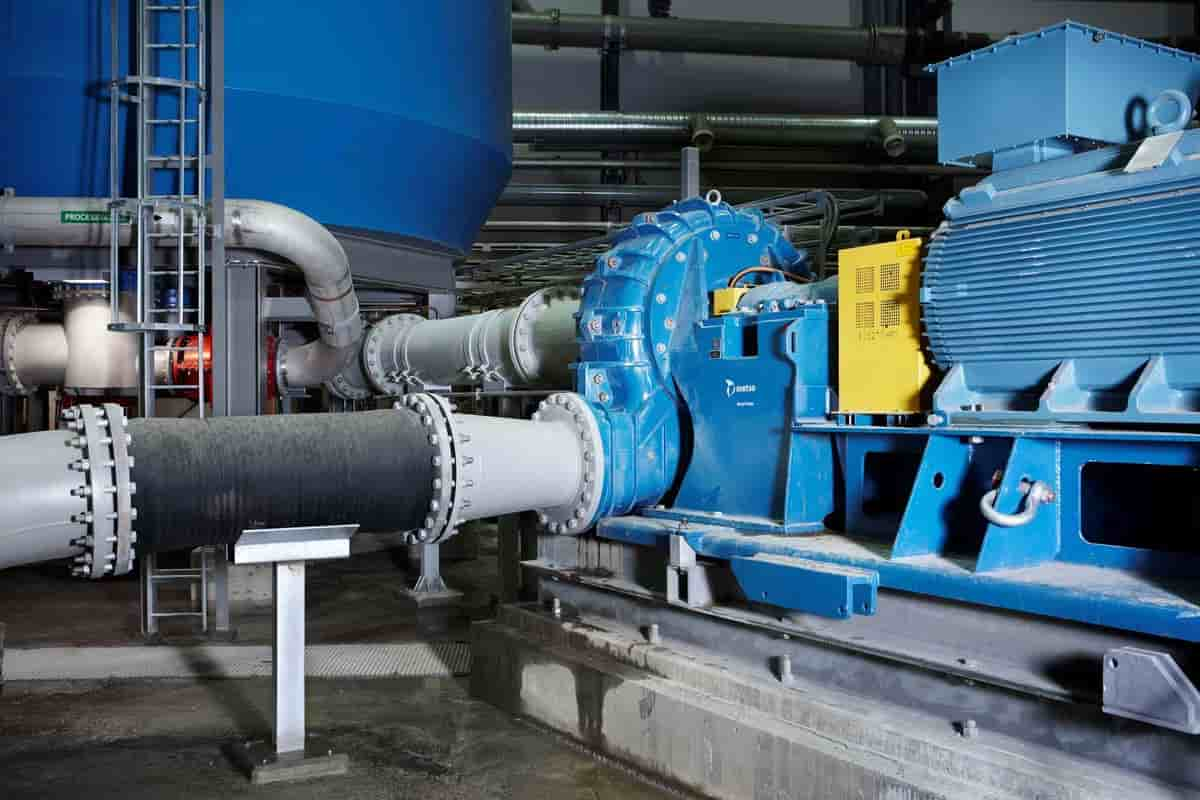What 250 Series Centrifugal Pump Is and What are the Specifications
One of the most famous models of centrifugal pumps is the 250 series of pumps, which have unique specifications
What do you want to do with your pump? Normal domestic uses or heavy industrial work? The 250 series centrifugal pumps will be suitable for you
mcm 250 series centrifugal pump
Since 1943, MCM has been providing centrifugal pumps to The Harrisburg Company for usage in the oil business
These pumps are used by The Harrisburg Company
Pump with a performance curve that satisfies maximum requirements while operating in the pump’s POR and that has an NPSHR with an appropriate margin below the NPSHA should be chosen based on the maximum process flow demand
Pump with a performance curve that satisfies maximum requirements while operating in the pump’s POR and that has an NPSHR with an appropriate margin below the NP When selecting a pump from the options provided by a manufacturer
There is a selection chart that illustrates the normal operating zone for each of the various pump sizes for a certain manufacturer’s pump type at a particular rotating speed
This chart may be found on the website
It is helpful to use the selection table in order to limit the pool of probable candidates for pumps that are capable of handling the procedure
On the selection chart, the pump sizes 5x6x11 and 6x8x11 overlap, so it is likely that these are the two best sizes to evaluate further if the maximum system requirements call for a pump running at a nominal 4-pole motor speed that could provide 1,000 gallons per minute (gpm) at 100 feet of total head
We can see that the pump sizes 5x6x11 and 6x8x11 overlap, so it is likely that these are the two best sizes
After determining a duty point with a flow rate of 1,000 gpm and a head of 100 feet, one can examine the published curves of the manufacturer for assistance in selecting the pump that is most suited to their needs
An example of a curve that has been documented for a 5611 pump that is working at 1,770
We are able to deduce a considerable amount of information from the pump curve provided by the manufacturer for this application, including the following:
The range of 10 to 10
5 inches for the impeller diameter that works best for a certain rated point is presented
At the basic efficiency point, the pump operates at an efficiency of 86%, which is greater than its efficiency of 85% at the rated point
At the rated point, the pump’s input power will be between 25 and 30 horsepower; nevertheless, it is possible that a motor with 40 horsepower might be required to prevent overloading near the end of the curve
The distance between the rating point NPSH3 and the end of the curve NPSH3 is 9–10 feet, and the distance between the two is 20 feet
Please keep in mind that this curve shows water at a temperature of 68 degrees Fahrenheit
If the application liquid has a specific gravity that is either higher or lower than that of water at this temperature, then a different set of power values will be employed

double life 250 series centrifugal pump
If the application liquid has a higher viscosity than the test liquid, the flow, head, and efficiency all need to be modified in compliance with the ANSI/HI 9
6
7 standard
How the Viscosity of a Liquid Affects The rotodynamic performance of the pump can serve as a guide for selecting the appropriate pump
As was just mentioned, the requirements of the process may call for a diverse range of typical operational flows to be produced by the system
It is essential to determine the most efficient method of regulating the pump so that it can reliably and effectively satisfy all of the regular operating criteria
In order for a pump to function normally, it needs to have its levels, pressure, flow, and temperature constantly regulated
Regulating the process values in question can be accomplished in a number of different ways, including temporarily turning off a pump, bypassing flow, throttling flow, altering pump speed, or using a combination of these methods
A type of dynamic pump known as a centrifugal pump circulates fluids throughout a system by utilizing one or more revolving impellers
They are the form of pump that is used the most frequently because of how simple and effective they are
In addition to being the most cost-effective option, conventional pumps have the advantage of being widely used and recognized
In comparison to positive displacement pumps, they provide higher flow rates while operating at lower pressures
Every single centrifugal pump has something called an impeller, which is essentially a set of rotating vanes
The rotary vanes that make up the device that uses centrifugal force to transfer energy to a fluid are often contained within a housing or casing of some kind
The component of the pump that rotates is the shaft, and the components that remain stationary are the volute, the stuffing box, and the bearings
The impeller and the shaft make up the pump
Radial flow, mixed flow, and axial flow are the three different types of flow that can be generated by centrifugal pumps
Axial flow pumps can achieve large flow rates despite their relatively low-pressure levels
Their lifting effect is in a direction that is perpendicular to the shaft of the impeller, which is similar to the way that a propeller on a boat drives water forward
The thrust of the impeller vanes is responsible for the generation of all of the pressure
Radial flow pumps, as opposed to centrifugal pumps, provide a higher pressure but a lower flow rate than their counterparts
As liquid moves through the impeller and out along the impeller blades, it experiences acceleration in a radial direction that is perpendicular to the direction of rotation of the pump shaft
The generation of pressure in this system is solely attributable to centrifugal force
The axial and radial flow pumping principles are combined in mixed-flow pumps that operate at medium pressure and medium flow

most efficient centrifugal pump
The liquid is discharged at a distance from the pump shaft that is greater than ninety degrees and at an angle greater than ninety degrees
The centrifugal force is responsible for producing some of the pressure, while the impeller’s upward thrust is responsible for producing the remaining portion
The selection of centrifugal pumps is primarily based on a number of parameters, the most important of which are flow rate, head, power, and efficiency
The volume of fluid that can be moved through a system in one minute is referred to as the flow rate of a pump, and it is typically expressed in terms of gallons per minute (gpm)
The actual flow rate that a pump produces needs to be compatible with the required flow rate that the system or application requires
The pressure that a pump is able to bear is determined by the amount of force that is applied to a given area of resistance (pounds per square inch)
Pressure shifts occur in axial flow pumps, just as they do in centrifugal pumps and other types of pumps, when the specific gravity of the fluid being pushed varies
Because of this, the definition of pump energy that emphasizes head is the one that is most commonly used
The capacity of a pump to “head” a fluid higher than the level of the suction input is referred to as the “head of the pump
” It is a useful unit of measurement for pressure that does not depend on the specific gravity of the fluid that is being pushed or pulled through the system, and it is expressed as a height above sea level in either feet or meters (m)
At the pump input, the stagnation pressure head and the vapor pressure head are both measured
NPSH is determined by subtracting the stagnation pressure head from the vapor pressure head
It is imperative that the required NPSH be taken into consideration in order to prevent pump cavitation
The amount of power that is actually delivered to the fluid from the pump is referred to as its output power, which is also referred to as water horsepower (hp)
Input power, also referred to as brake horsepower, is the amount of horsepower that must be provided to a pump in order for it to work
Input power is also sometimes referred to as pump horsepower (hp)
The link between the power that is put in and the power that is ultimately extracted is one definition of efficiency
It provides an explanation of how much of the power that is put in is actually put to use, taking into consideration the amount of energy that is lost in the pump (friction and slide)










